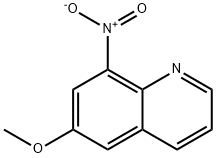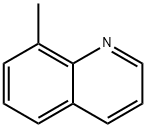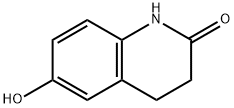A5415912
6-Methylquinoline , 98% , 91-62-3
Synonym(s):
p-Toluquinoline;NSC 4152
CAS NO.:91-62-3
Empirical Formula: C10H9N
Molecular Weight: 143.19
MDL number: MFCD00006804
EINECS: 202-084-6
Update time: 2022-07-08
PRODUCT Properties
| Melting point: | -22°C |
| Boiling point: | 256-260 °C (lit.) |
| Density | 1.067 g/mL at 20 °C (lit.) |
| vapor density | >1 (vs air) |
| FEMA | 2744 | 6-METHYLQUINOLINE |
| refractive index | n |
| Flash point: | >230 °F |
| storage temp. | Store below +30°C. |
| solubility | Chloroform (Slightly), Methanol (Slightly), soluble in alcohol and oils, and in Propylene glycol. |
| form | Liquid |
| pka | 5.21±0.10(Predicted) |
| color | green-yellow |
| Specific Gravity | 1.07 |
| Odor | blossom odor, sweet, animalic upon dilution |
| Odor Type | animal |
| biological source | synthetic |
| Water Solubility | Not miscible or difficult to mix with water. |
| Sensitive | Light Sensitive |
| JECFA Number | 1302 |
| BRN | 110336 |
| LogP | 2.54 |
| CAS DataBase Reference | 91-62-3(CAS DataBase Reference) |
| NIST Chemistry Reference | Quinoline, 6-methyl-(91-62-3) |
| EPA Substance Registry System | 6-Methylquinoline (91-62-3) |
Description and Uses
6-Methylquinoline can be used as primary carbon source in culture of Pseudomonas putida QP1. 6-Methylquinoline was used in the synthesis of fluorescent halide-sensitive quinolinium dyes and fluorescent probes for determination of chloride in biological systems.
Safety
| Symbol(GHS) |  GHS07 |
| Signal word | Warning |
| Hazard statements | H302-H315 |
| Precautionary statements | P264-P270-P280-P301+P312-P302+P352-P332+P313 |
| Hazard Codes | Xn |
| Risk Statements | 22-38-68-36/37/38 |
| Safety Statements | 26-36-45-36/37/39 |
| WGK Germany | 3 |
| RTECS | VC0550000 |
| TSCA | Yes |
| HS Code | 29334990 |






